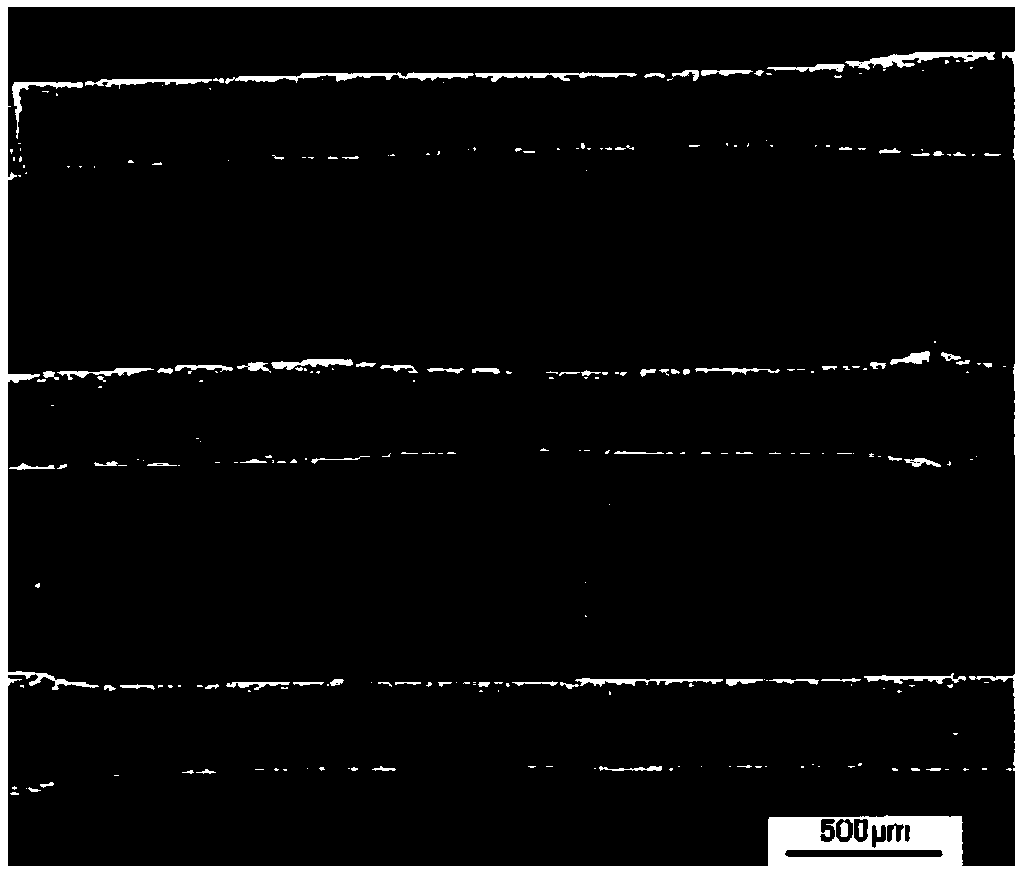Porous calcium phosphate/natural polymer composite scaffold, preparation method and application thereof
A technology of natural polymer and porous calcium phosphate, applied in the field of porous calcium phosphate/natural polymer composite scaffold and its preparation, to achieve the effect of simple and fast preparation process, promotion of adhesion and proliferation, and promotion of adhesion
- Summary
- Abstract
- Description
- Claims
- Application Information
AI Technical Summary
Problems solved by technology
Method used
Image
Examples
Embodiment 1
[0045] PCL (Mn=45000) was selected as the sacrificial model material, gelatin was selected as a natural polymer, and the bone cement system was "tetracalcium phosphate + calcium hydrogen phosphate (molar ratio 1:1)". The implementation steps included:
[0046] (1) Use 3D-Bioplotter TM The printer prefabricated the PCL cylindrical sacrificial model: put the PCL into the high-temperature barrel, select a needle with an inner diameter of 300 μm, and set the heating temperature to 180°C. Use AutoCAD software to design a cylinder model with a diameter of 8 mm and a height of 5 mm, and import it into the Bioplotter RP layering software for layering processing. The layering height is 240 μm, and then import the layered file into the Visual Machines software to set the internal fiber stacking of the model The method is 0° and 90° alternately, and the fiber spacing is 1 mm. After holding for 20 minutes, adjust the platform temperature to 4°C, nitrogen extrusion pressure to 1.6 bar, fi...
Embodiment 2
[0052] PCL (Mn=45000) was selected as the sacrificial model material, gelatin was selected as the natural polymer, and the bone cement system was "partial crystalline calcium phosphate + calcium hydrogen phosphate + hydroxyapatite (mass ratio 45:45:10)". The implementation steps included :
[0053] (1) Use 3D-Bioplotter TM The printer prefabricated the PCL cylindrical sacrificial model: put the PCL into the high-temperature barrel, select a needle with an inner diameter of 300 μm, and set the heating temperature to 180°C. Use AutoCAD software to design a cylinder model with a diameter of 8 mm and a height of 5 mm, and import it into the Bioplotter RP layering software for layering processing. The layering height is 240 μm, and then import the layered file into the Visual Machines software to set the internal fiber stacking of the model The method is 0° and 90° alternately, and the fiber spacing is 1mm. After 20 minutes of heat preservation, adjust the platform temperature to...
Embodiment 3
[0059] TPU (Mn=60000) was selected as the sacrificial model material, gelatin was selected as a natural polymer, and the bone cement system was "tetracalcium phosphate + calcium hydrogen phosphate (molar ratio 1:1)". The implementation steps included:
[0060] (1) Use 3D-Bioplotter TM The printer prefabricated the TPU cylindrical sacrificial model: put the TPU into the high-temperature barrel, select a needle with an inner diameter of 300 μm, and set the heating temperature to 220°C. Use AutoCAD software to design a cylinder model with a diameter of 8 mm and a height of 5 mm, and import it into the Bioplotter RP layering software for layering processing. The layering height is 240 μm, and then import the layered file into the Visual Machines software to set the internal fiber stacking of the model The method is 0° and 90° alternately, and the fiber spacing is 1mm. After 20 minutes of heat preservation, adjust the platform temperature to 20°C, nitrogen extrusion pressure to 2....
PUM
| Property | Measurement | Unit |
|---|---|---|
| Diameter | aaaaa | aaaaa |
| Particle size | aaaaa | aaaaa |
| Aperture | aaaaa | aaaaa |
Abstract
Description
Claims
Application Information
 Login to View More
Login to View More - R&D
- Intellectual Property
- Life Sciences
- Materials
- Tech Scout
- Unparalleled Data Quality
- Higher Quality Content
- 60% Fewer Hallucinations
Browse by: Latest US Patents, China's latest patents, Technical Efficacy Thesaurus, Application Domain, Technology Topic, Popular Technical Reports.
© 2025 PatSnap. All rights reserved.Legal|Privacy policy|Modern Slavery Act Transparency Statement|Sitemap|About US| Contact US: help@patsnap.com



